1.) MIGHTY IBM AT HARD DRIVE
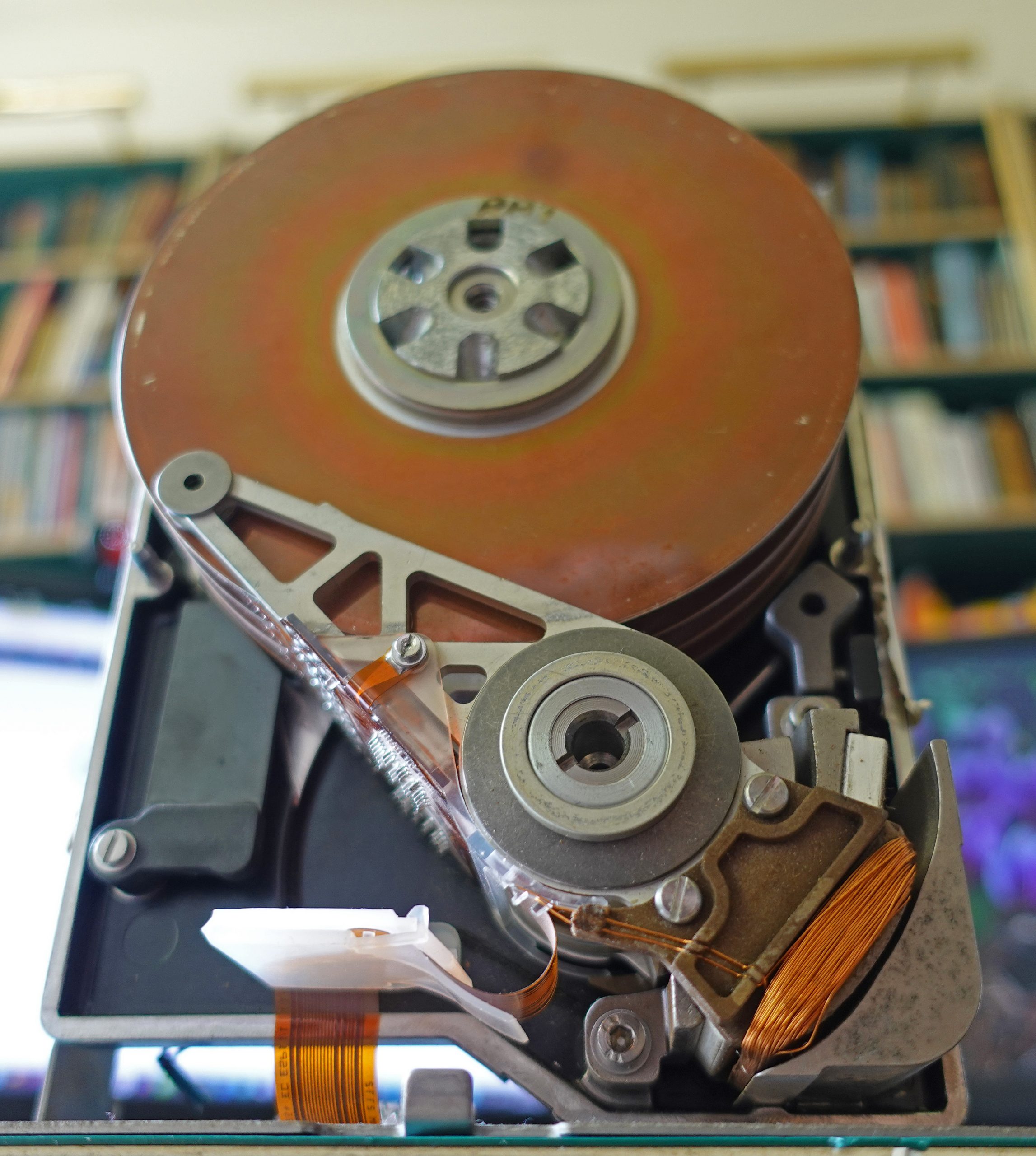
Capacity: 20 Mb (the equivalent nowadays of one fairly high resolution picture!) Dimensions: 140 x 210 x 80 mm approx. Weight: 5.8 kilos or 12.8 pounds!!
This retro tech behemoth belonged to an IBM AT PC which I was given around 1986. It was a very nice thing to look at, solid, almost monumental, certainly engineered to last, one supposed. Of course, compared to today’s machines it was extremely weedy with its 8-bit ‘286 processor. It only ran DOS but without the overhead of a graphical user interface like Windows it was fast enough for word processing with Wordstar, running spreadsheets like Lotus-123 and games like Microsoft Flight Simulator.
Less than 20 years separate these two drives (also over 5.5kilos and many Mb!)
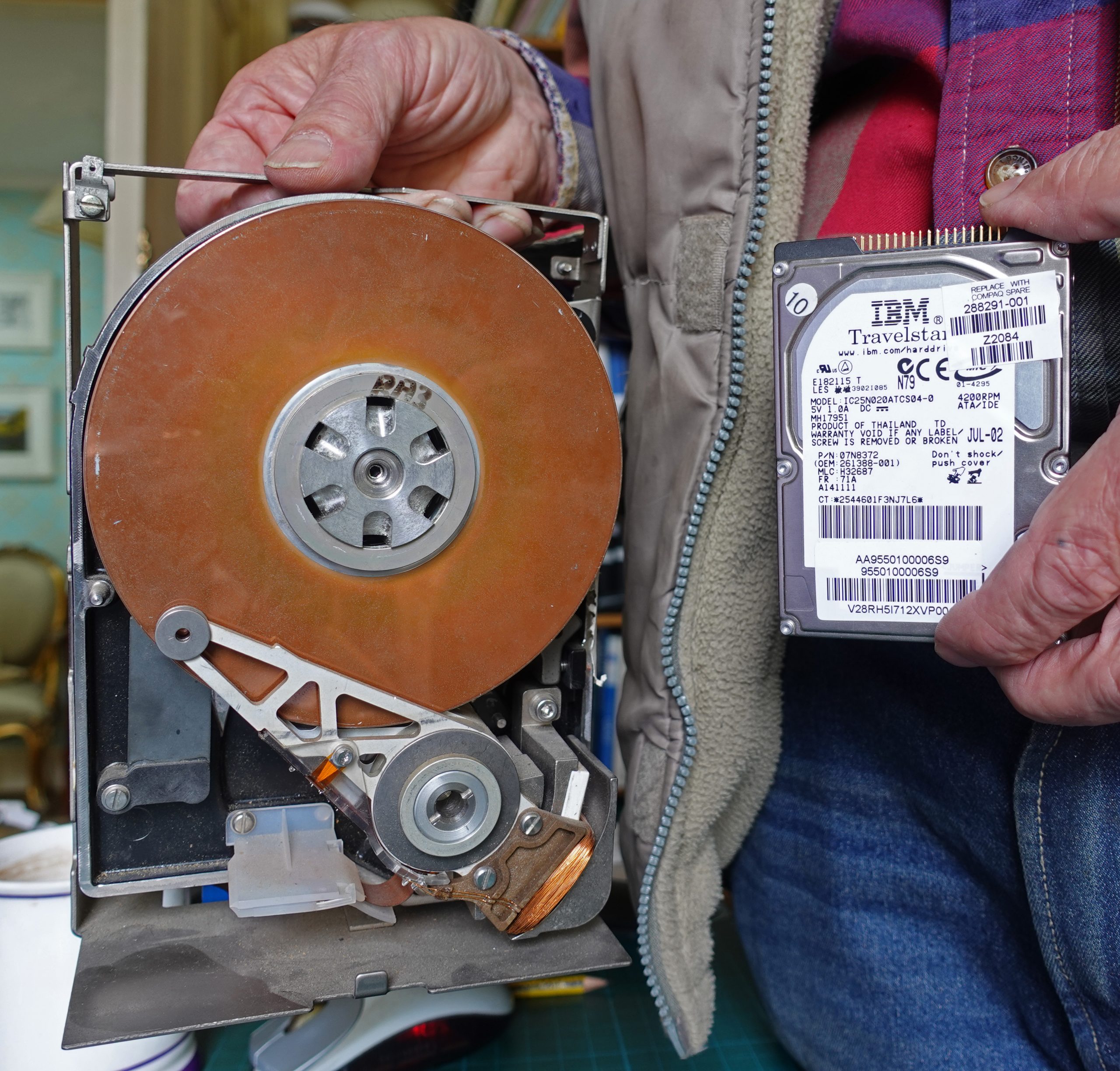
As I remember, the hard drive was 10 M bytes – Wikipedia says 20Mb so I suppose I must be misremembering. (Perhaps I am thinking of the Winchester Hard Drive which I had at work. This occupied a box the same size as the original IBM PC which sat alongside it. When you first turned it on, you had to wait while it got up to speed and stabilised – about 720 rpm as I remember. It was forbidden to move it on your desk as the heads would very easily crash into the platters and destroy it. If it needed to be moved, you had to get in a person from management services!)
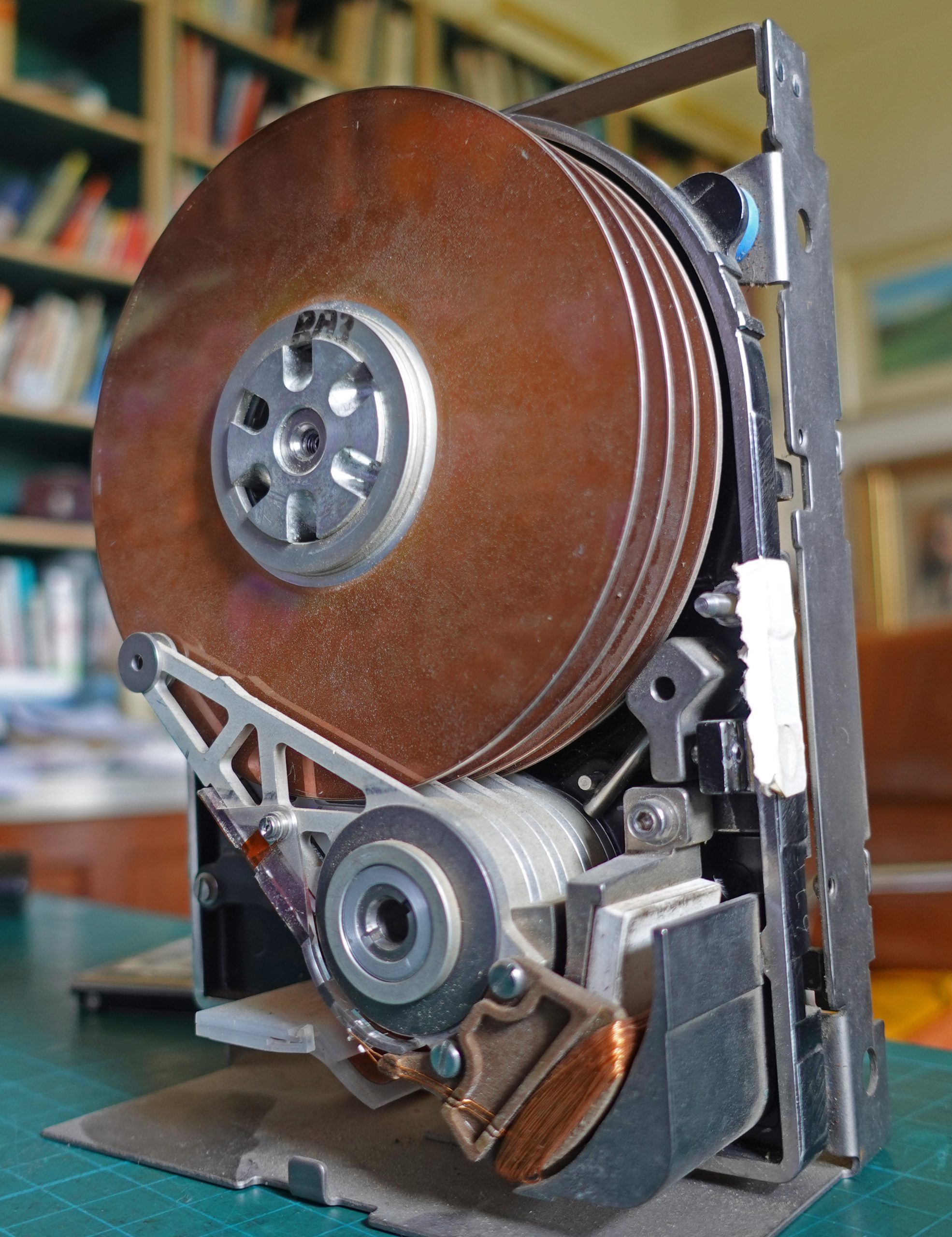
The IBM was also sensitive to shock and as I recall, there was a DOS command to park the heads after which you could move the computer reasonably safely.
I gradually upgraded the AT over the years so eventually everything, including the motherboard was replaced until, like the Cheshire Cat’s smile, only the case remained.
2.) Nixie Tube Clock
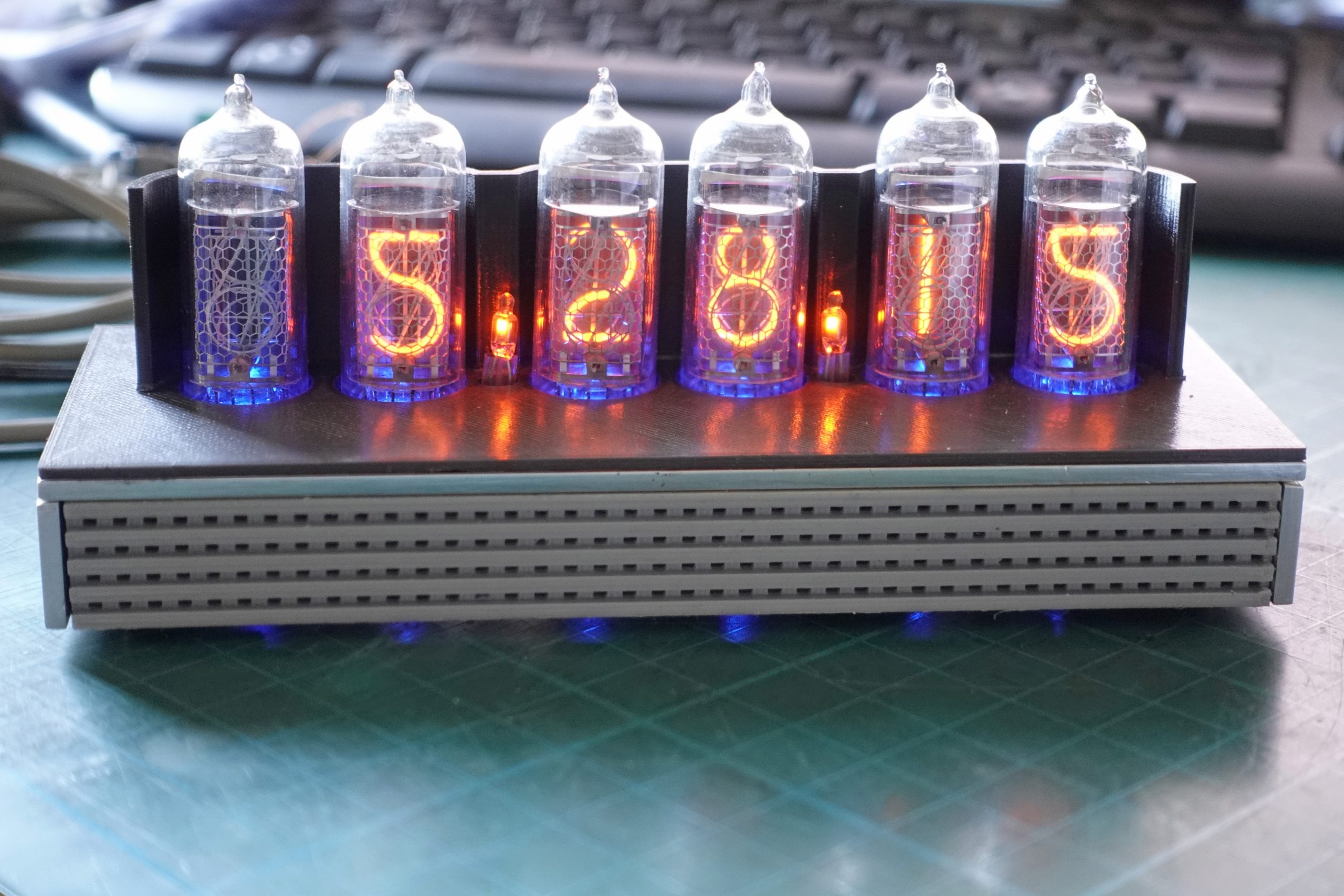
The Nixie tube is a cold cathode discharge tube containing mostly neon gas at low pressure. The tube contains a wire mesh anode (positive) and stacked behind, ten wire cathodes in the shape of the numerals 0 to 9, one behind the other. Applying about 170 volts between a cathode and the anode causes the cathode to be surrounded by the characteristic orange neon glow.
Before solid state indicators were available, Nixie tubes were used for readouts in all sorts of scientific instruments as well as clocks. Now they are rather cool retro-tech. However, as far as I am aware, they have not been manufactured for many years so Nixies are all “new old stock” mostly from the old Soviet Bloc countries. Because of this, they are not very cheap!
I made this clock from a kit from PV Electronics about eight years ago but have only just got round to making a case for it (using my 3D printer). The picture below shows the parts for the clock case. They also include some pieces of 3.2 mm aluminium.
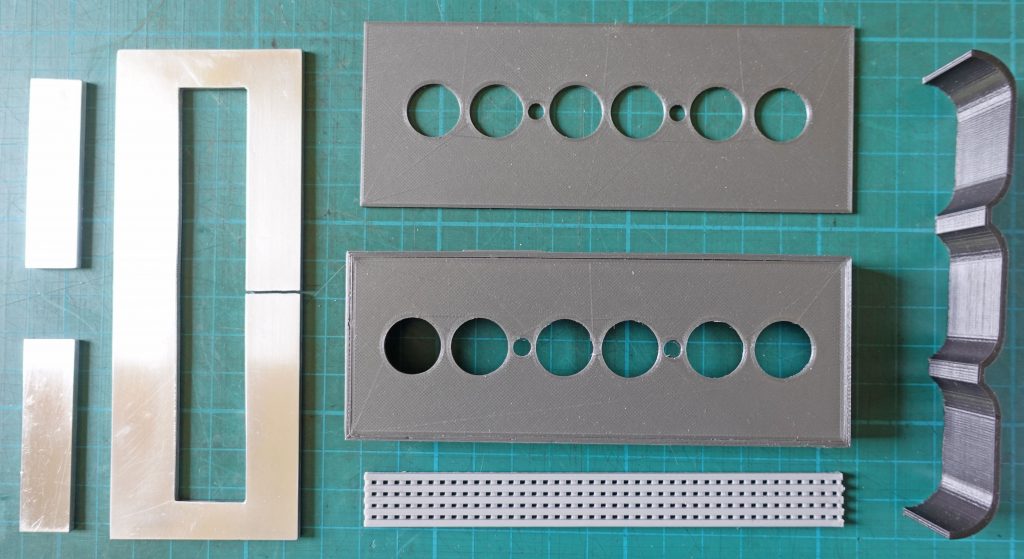
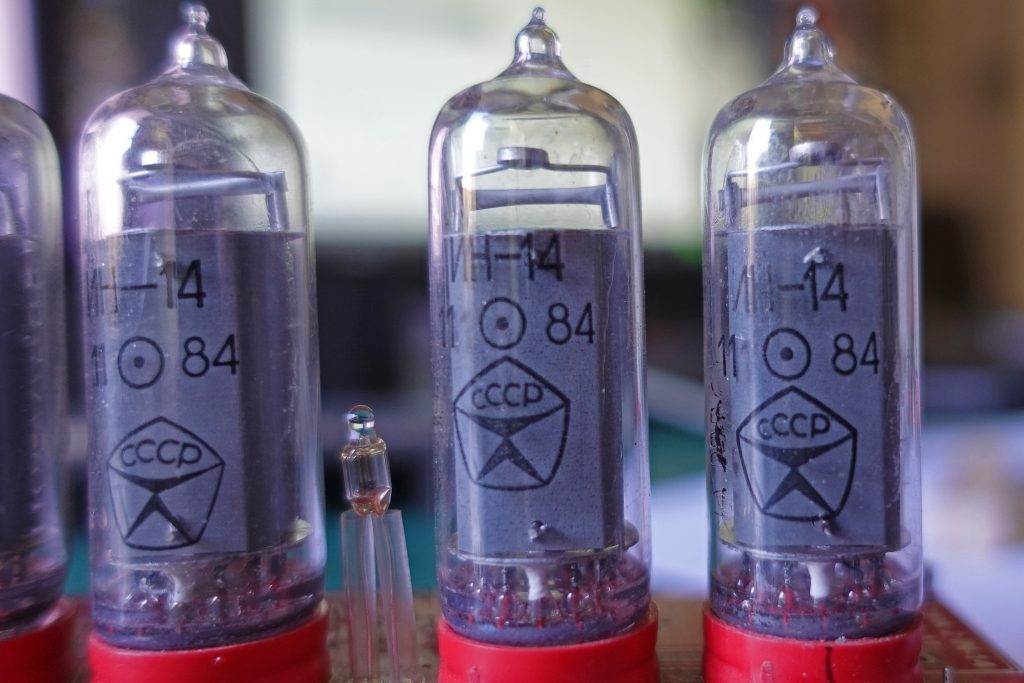
This clock uses IN-14 tubes ( ИH-14 in Cyrillic) made in Soviet Russia (CCCP) in, I would guess, November 1984. The display has the characteristic upside down “2” for a “5”.
3.) Muldivo Mentor Calculator
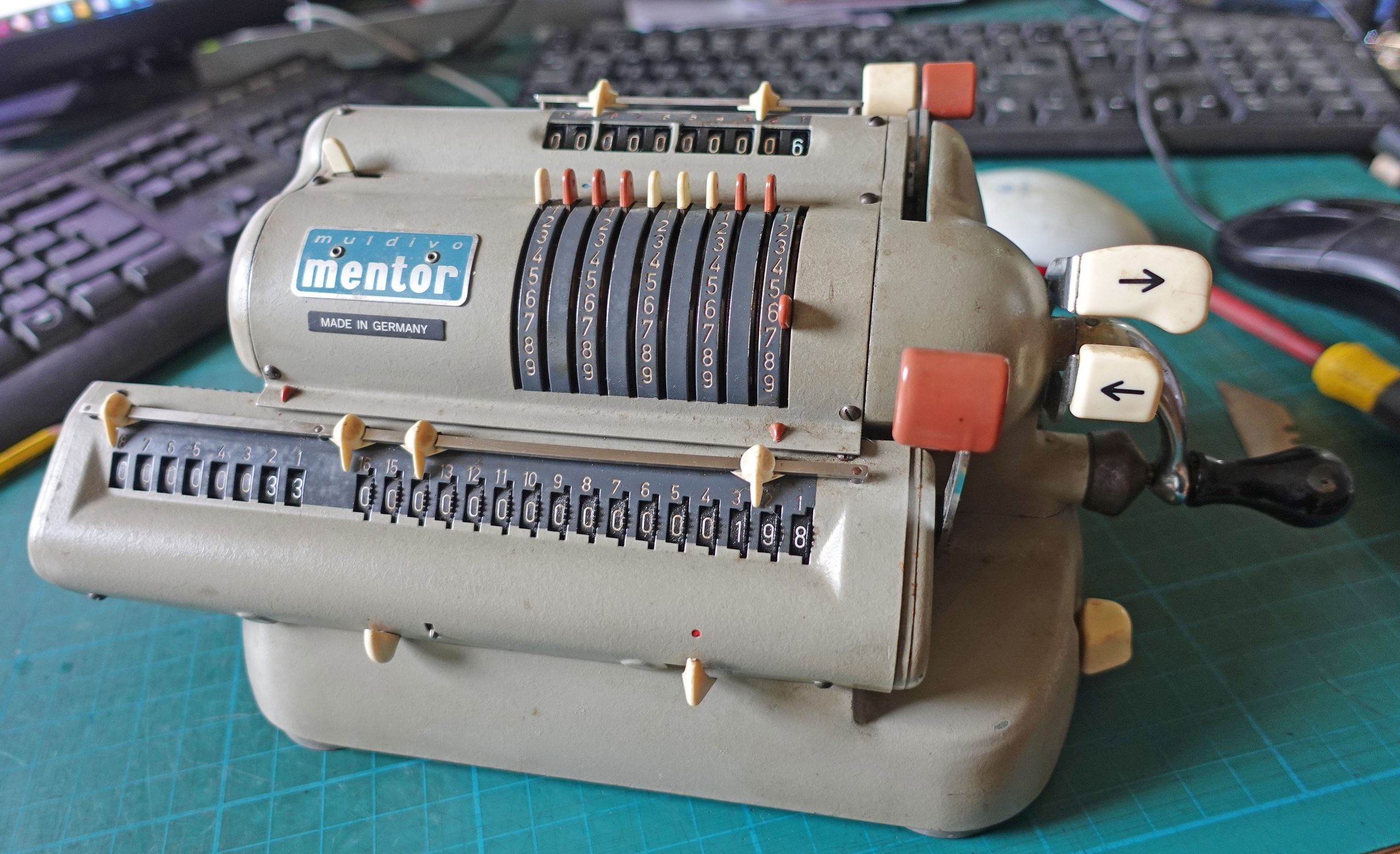
This machine comes from a time (the 1960s in this case) when stuff was made to last – the vast majority is metal, machined, fettled and otherwise finished to an exacting standard. Look at all the hundreds (possibly) of moving parts! It’s pretty quick to use – just enter the digits with the levers and turn the handle once for adding and subtraction. There is a bit more handle twirling for multiplication and division but it’s perfectly doable.
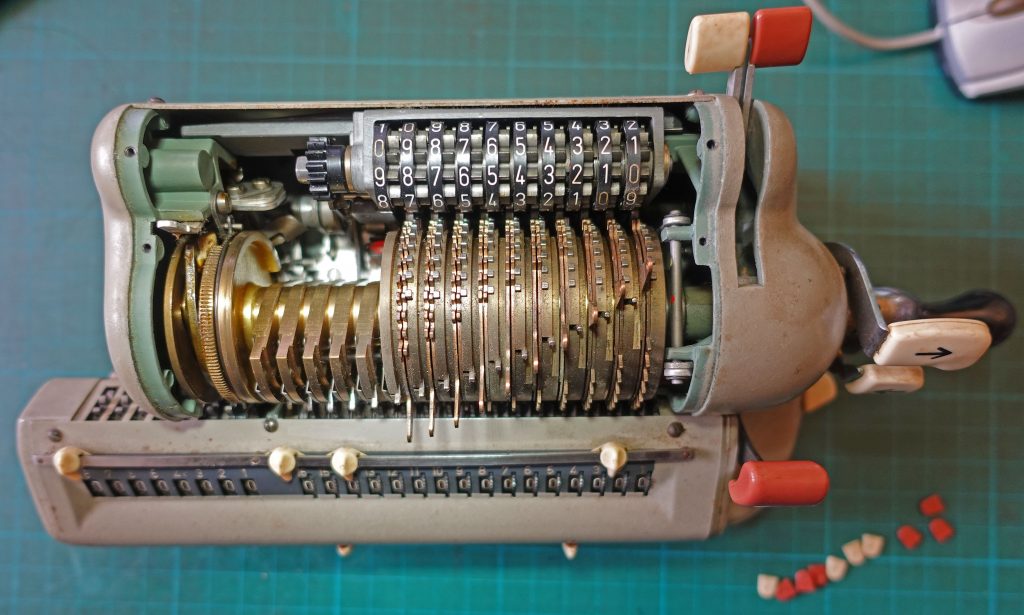
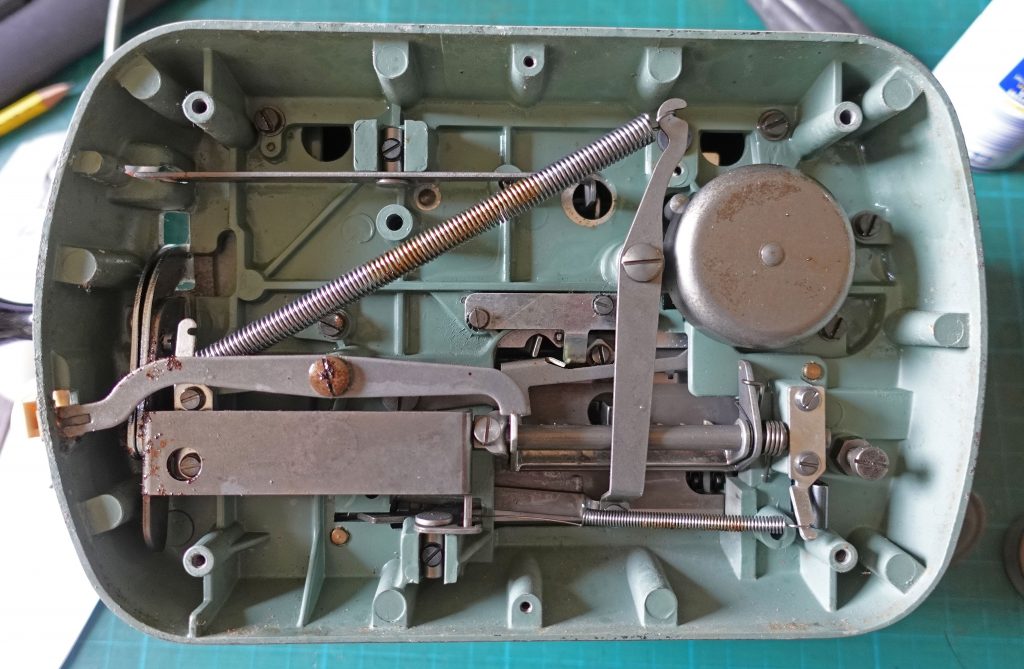
Looks rather cool on your desk, I think! Trouble is I’ve got not got a lot of room on my desk so it sits, unused, on a shelf.
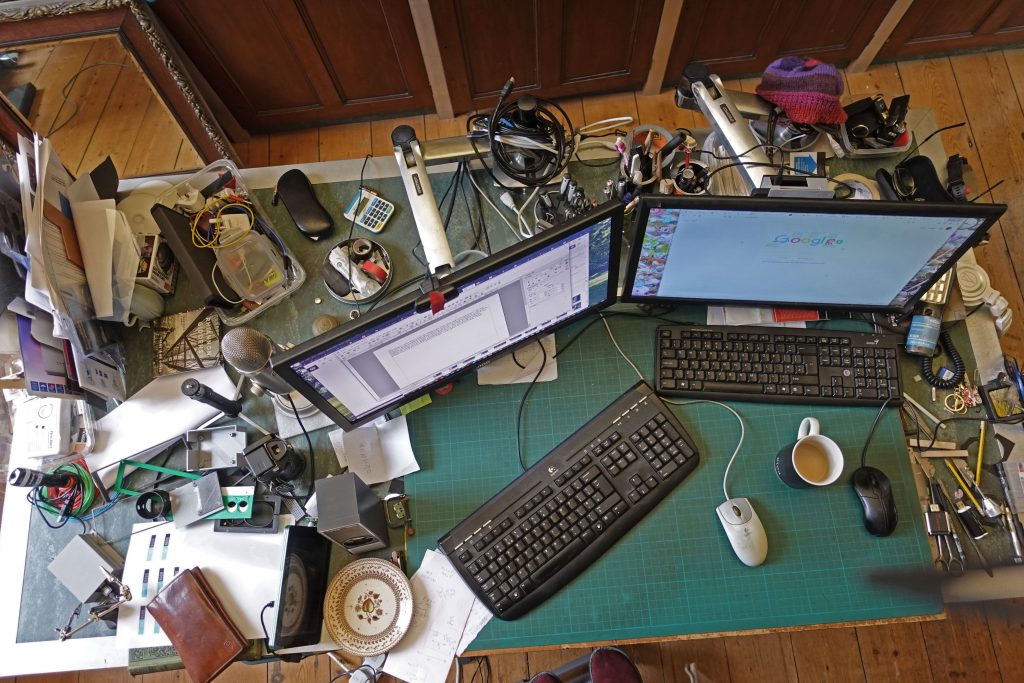
4). Bosch D-Jetronic ECU
This analogue electronic fuel injection system is from my VW-Porsche 914 1.7 (1970) It was one of the first to be used on production cars. It was a development of a system developed by Bendix in the USA in the late 1950s and was in production from 1967 to 1979. Last used on the Jaguar V12 engine (XJ12 and XJ-S) from 1975 until 1979, according to Wikipedia.
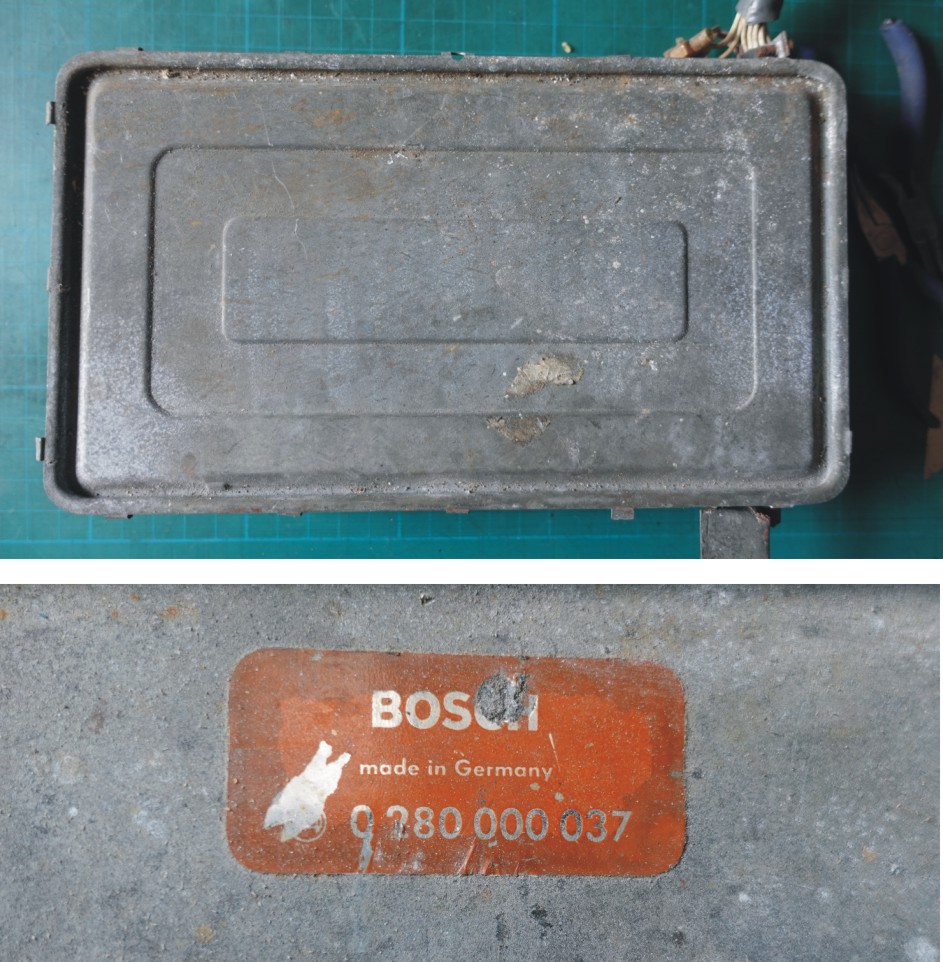
Above: ECU case. Dimensions approx. 290 x 170 x 50 mm.
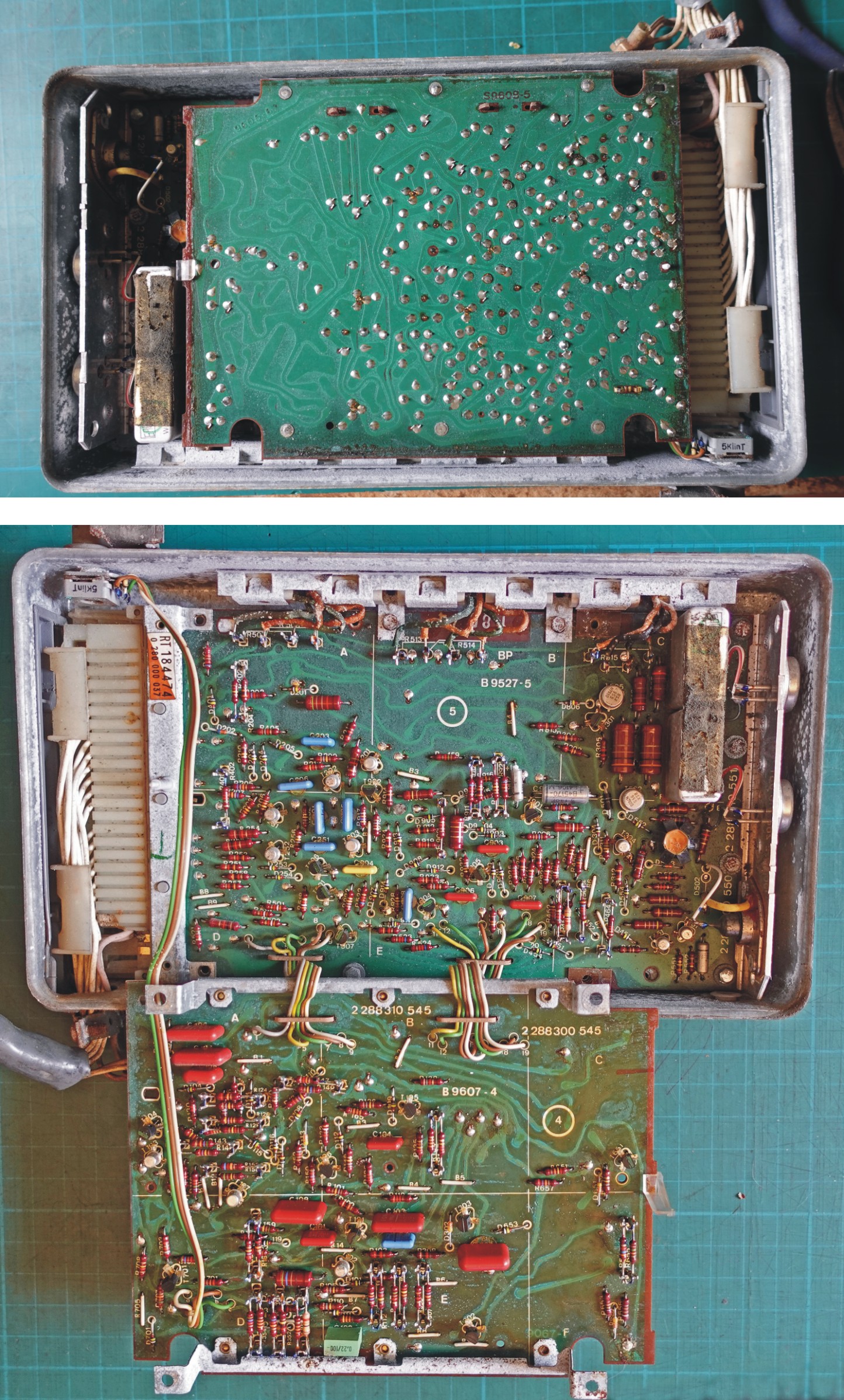
Above: the interior of the D-Jetronic ECU. Not an integrated circuit in sight (even some were available back then)! The PCBs are not designed on a computer, I fancy. Crepe self-adhesive drafting tape on Mylar or similar (I’ve done that!)
For a detailed explanation of this ECU see here. Could the action of this ECU be simulated by a Raspberry Pi Pico (and a few power transistors)? (not exactly, of course! As Hi-Fi enthusiasts know, digital can only approximate to analogue but for all intents and purposes etc.)
